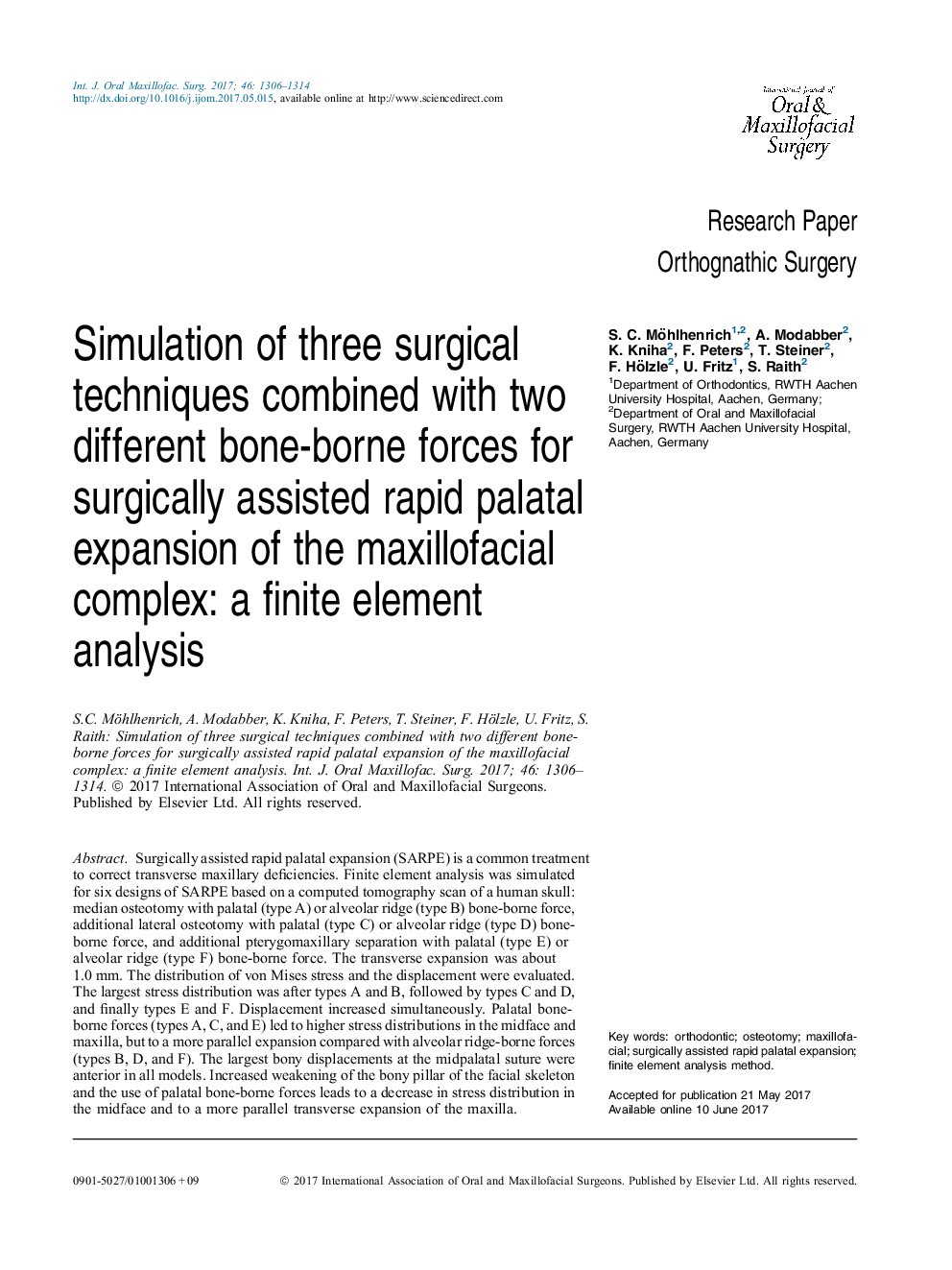| Article ID | Journal | Published Year | Pages | File Type |
|---|---|---|---|---|
| 5638903 | International Journal of Oral and Maxillofacial Surgery | 2017 | 9 Pages |
Surgically assisted rapid palatal expansion (SARPE) is a common treatment to correct transverse maxillary deficiencies. Finite element analysis was simulated for six designs of SARPE based on a computed tomography scan of a human skull: median osteotomy with palatal (type A) or alveolar ridge (type B) bone-borne force, additional lateral osteotomy with palatal (type C) or alveolar ridge (type D) bone-borne force, and additional pterygomaxillary separation with palatal (type E) or alveolar ridge (type F) bone-borne force. The transverse expansion was about 1.0Â mm. The distribution of von Mises stress and the displacement were evaluated. The largest stress distribution was after types A and B, followed by types C and D, and finally types E and F. Displacement increased simultaneously. Palatal bone-borne forces (types A, C, and E) led to higher stress distributions in the midface and maxilla, but to a more parallel expansion compared with alveolar ridge-borne forces (types B, D, and F). The largest bony displacements at the midpalatal suture were anterior in all models. Increased weakening of the bony pillar of the facial skeleton and the use of palatal bone-borne forces leads to a decrease in stress distribution in the midface and to a more parallel transverse expansion of the maxilla.
